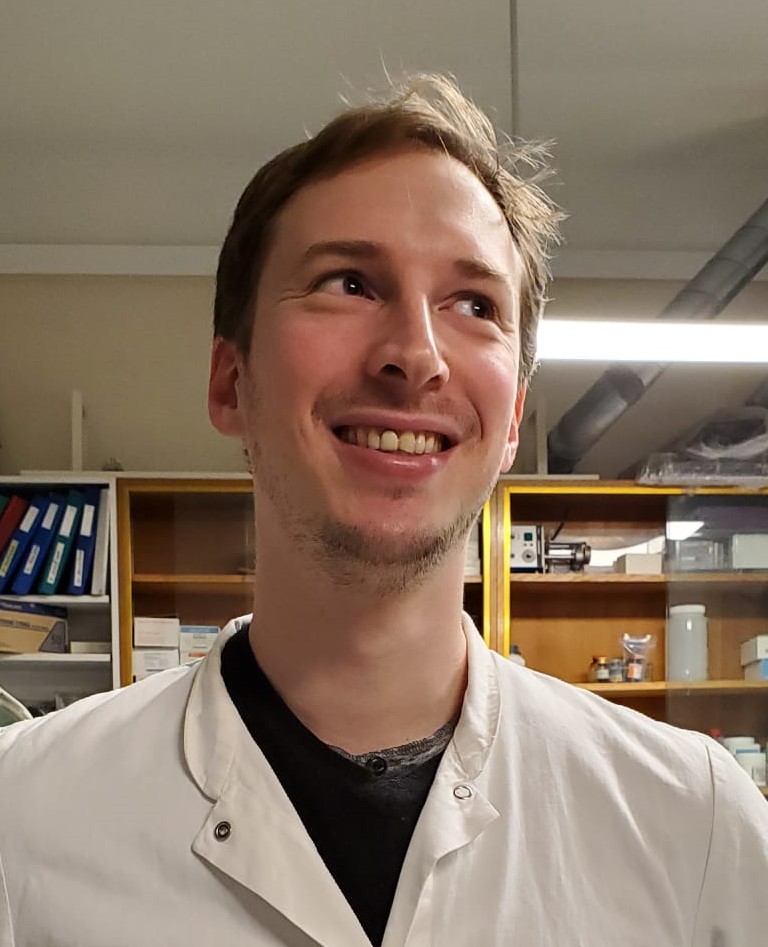IBPC, CNRS UMR8261 "Identification and characterization of RNA binding sites for (p)ppGpp using
RNA-DRaCALA."Nucleic Acids Research/, 10.1093/nar/gkac1224
Jagodnik,J., Tjaden,B., Ross,W. and Gourse,R.L.
Cv
Jonathan Jagodnik est un microbiologiste passionné d'ARN âgé de 33 ans. Il a réalisé son doctorat de 2013 à 2017 dans l'équipe Guillier-Hajnsdorf à l'Institut de Biologie Physico-Chimique (IBPC) CNRS, au laboratoire d'Expression Génétique Microbienne. Il a étudié des petits ARN régulateurs bactériens, et a découvert des structures en tige-boucle au sein de séquences codantes d’ARN messagers activant le démarrage de la traduction. Il a ensuite déménagé aux États-Unis, au département de bactériologie de l'Université du Wisconsin-Madison, où il a accompli un post-doctorat dans l'équipe de Richard L. Gourse de 2018 à 2021. Soutenu par une bourse « EMBO long-term fellowship », Il a développé la méthode RNA-DRaCALA pour cribler de nombreux aptamères pour la liaison à un ou plusieurs ligands. Grâce à cette méthode, il a confirmé la liaison de 24 aptamères aux alarmones ppGpp et pppGpp et a découvert certains aptamères spécifiques du ppGpp ou du pppGpp. En septembre 2021, Jonathan a réintégré l'équipe Guillier-Hajnsdorf à l'IBPC, CNRS, où il développe à présent son projet sur l'étude du démarrage de la traduction bactérienne à l’échelle transcriptomique.
Contact
IBPC, CNRS UMR8261, 13 rue Pierre et Marie Curie, 75005 Paris
Cette adresse e-mail est protégée contre les robots spammeurs. Vous devez activer le JavaScript pour la visualiser.
Twitter : @JagodnikScience
Résumé de l'article
ppGpp and pppGpp [abbreviated here as (p)ppGpp] are highly conserved
stress signaling molecules in bacteria, chloroplasts, and mitochondria.
When induced in response to stress, (p)ppGpp bind to multiple protein
targets involved in functions as diverse as transcription, translation,
nucleotide metabolism, and other metabolic processes. (p)ppGpp can bind
not only to proteins, but also to RNA aptamers : indeed, a
(p)ppGpp-binding family of aptamers recently was described in
firmicutes.These ligand-binding RNAs are embedded within RNA transcripts
upstream of expression platforms forming riboswitches that regulate gene
expression. Here, we implemented the DRaCALA technique, originally
designed to study protein-ligand interactions, for the study of
RNA-ligand binding, permitting rapid screening of dozens of RNA aptamer
candidates concurrently. Using this method, which we call RNA-DRaCALA,
we screened 30 RNA aptamer candidates for binding to (p)ppGpp and
identified candidates with high specificity for ppGpp or pppGpp or both.
By expanding the number of biochemically verified sites, this method not
only allowed construction of more accurate secondary structure models,
but it also enabled prediction of key features that distinguish a ppGpp
from a pppGpp binding site. We suggest this method could facilitate
identification and understanding of the features needed for ligand
binding to other classes of aptamers.




